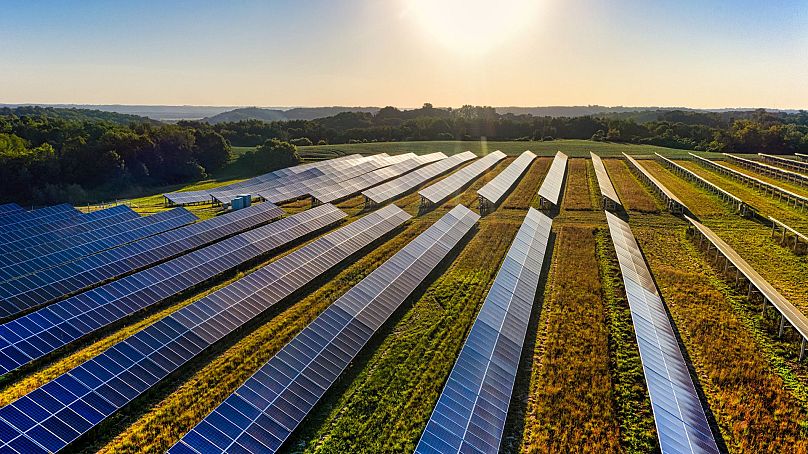Could dropping containers of sand down mine shafts give us a way to store renewable energy?
Repurposed underground mines could store enough energy to power “the entire earth” for a day, new research suggests.
During good weather conditions, wind and solar often generate more power than a grid can use. So where can we store this excess energy?
According to scientists at the International Institute for Applied Systems Analysis (IIASA), abandoned mines could provide a solution.
They claim that turning decommissioned mines into vast “gravity batteries” could provide up to 70 terawatts of energy storage. This is enough to match the entire world’s daily electricity consumption.
“To decarbonise the economy, we need to rethink the energy system based on innovative solutions using existing resource,” urges Behnam Zakeri, study coauthor and a researcher in the IIASA Energy, Climate, and Environment Program.
“Turning abandoned mines into energy storage is one example of many solutions that exist around us, and we only need to change the way we deploy them.”
How do gravity batteries work?
Most batteries we use in day-to-day life store energy through electrochemical processes. A particular chemical reaction will release energy, which can then be used.
Gravity batteries, on the other hand, are mechanical contraptions.
They use the excess energy produced by renewables to lift a weight. When the grid is running low on energy, the weight is dropped - powering a generator as it plummets.
There are plenty of different versions of this type of battery. The simplest - and oldest - is a form of pendulum clock that is powered by the force of gravity.
The most common type in use today is pumped-storage hydroelectricity. This is where water is pumped to higher elevations to store energy and released through turbines to generate electricity. Pump storage is very common, with a total installed storage value of 1.6 terawatt hours.
The proposed gravity system in mines has a global energy capacity potential of seven to 70 TWh, the IAASA researchers say in the article, published in Energies.
How would a gravity battery in a mine work?
The Underground Gravity Energy Storage (UGES) model proposed by the IIASA researchers uses existing elevators to raise and lower containers full of sand.
Mines are well-suited to such batteries. This is because they already have deep shafts that could be used to drop a weight. Gravity batteries, require at least 300 metres of fall space to work properly.
Building these projects could help generate revenue in impoverished mining communities too, the researchers say.
“When a mine closes, it lays off thousands of workers. This devastates communities that rely only on the mine for their economic output. UGES would create a few vacancies as the mine would provide energy storage services after it stops operations,” says Julian Hunt, a researcher in the IIASA Energy, Climate, and Environment Program and the lead author of the study.
“Mines already have the basic infrastructure and are connected to the power grid, which significantly reduces the cost and facilitates the implementation of UGES plants.”












